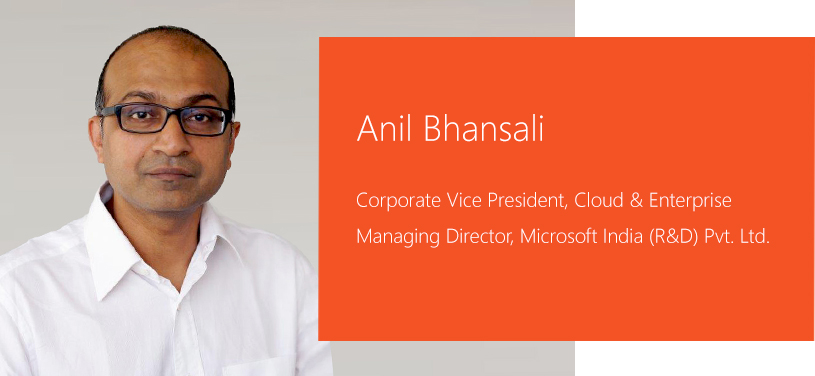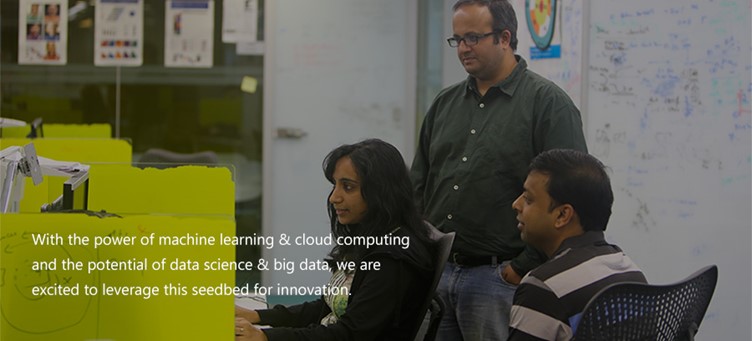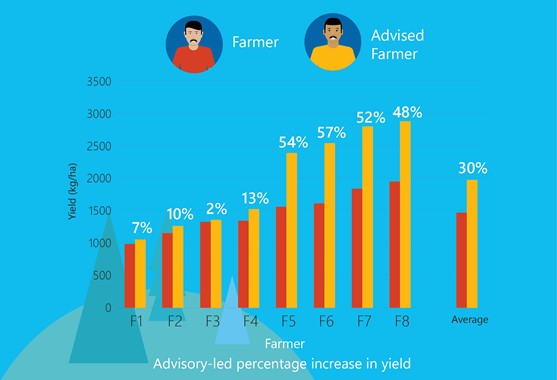2017: The year for reimagining the future of computing

The computing age has witnessed remarkable machines go from the size of a room to a tiny chip in your pocket. But size isn't the only thing that's changed. The way we interact with these powerful tools has transformed over the ages. We've gone from keyboards to pointers, and now touch interfaces. Every new iteration has made it easier and more intuitive for us to use these tools to our advantage. It is now time to leap beyond these iterations and completely reimagine how we interact with computers.
Why now? Simply because our ecosystem has never been more ready for disruptive innovation. Connected devices, Curious machines and Cohesive (Big) data have set the stage for disruptive new developments. Some of these developments have already begun to deliver results. Let us look at some of the technologies & trends taking shape in 2017 that are set to disrupt computing as we know it.
Machines that are curious, can think and learn
Human involvement in the interaction with computers and their decision making is rapidly set to become obsolete. Microsoft's vision for 2017 and beyond is to create intelligent machines that think, learn and act the way humans do and, more importantly, function with autonomy. We envision self-directing, self-motivating machines will be able to perform set objectives rather autonomously. The objective of machine learning is not just to achieve self-reliance. The real winning moment will be when humans and machines effectively 'collaborate as co-workers' whilst working independently through artificial intelligence. With our machine learning tools accessible to developers, we have paved the path towards this goal.
With Azure Machine Learning - part of Microsoft's Cortana Intelligence Suite - our solutions have already helped forecast energy demand and gain insights on vehicle health and driving habits. Microsoft's work with L.V. Prasad Eye Institute on Big Data - MINE (Microsoft Intelligent Network for Eyecare) - is aimed at helping tackle avoidable blindness. This is another area where technology can make a critical difference with real social impact. Our developers are excited to work with partners on the potential of using cloud-based data to predict the next move in their industry.
Today, machines can quickly sift through massive amounts of data, identify the key metrics at the speed of light and draw valuable conclusions. Moving forward, machines will act, perform and respond intelligently. Now is the time to reimagine what we want these intelligent units to do, how we want them to behave, and how we want them to collaborate within our ecosystem.
Machines with the 'human' ability to understand language
A fundamental challenge of creating artificial intelligence has been the barrier to natural communication. Tapping a screen or moving a cursor may seem easy, but the most natural form of interaction is something our species has perfected over millions of years of evolution - language. The emerging trend of natural language processing will lift this final barrier and make communication effortless. If computers can learn to sift through data and create analytical models, why not learn to communicate like human beings as well?
At Microsoft, we envision combining the power of natural human language with advanced machine intelligence through our Conversations as a Platform (CaaP). This goal is aimed at transforming our interactions with computers. Our bot development framework is enabling developers to build machines that can work through text, voice, videos, animations and even holograms to pick up slang, complex instructions, interlinked topics and emotions. With tools that apply the power of human language to computer interfaces, developers can link bots to digital personal assistants, like Cortana and assist them with predictive actions. Eventually, interacting with a cutting-edge application will become as easy as having a conversation.
Each of these trends holds tremendous promise for democratizing technology. The democratization of technology is not just about access to technology – it's about solving the problems facing mankind that have never been solved before. It is about creating a collective impact on the quality of life on our planet.
At Microsoft, we continue to challenge ourselves on how we can leverage technology to fundamentally improve human conditions. We believe, today, the opportunity to address this challenge is greater than ever. With the power of machine learning & cloud computing and the potential of data science & big data, we are excited to leverage this seedbed for innovation.
Democratization of technology for a digitally empowered India
In India, Microsoft is working on a digital transformation roadmap. We are partnering government, public and private entities in harnessing digital technologies and remodelling governance processes. Our aim is to be the technology catalyst providing the key platform and infrastructure in this journey.
We are working on a roadmap to enhance the collective quality of life through innovative work in healthcare, education and agriculture. In the agriculture sector, we have leveraged advanced analytics to help farmers in Andhra Pradesh ascertain the right time for sowing to maximize crop yields. Using the Cortana Intelligence Suite including machine learning, the Sowing App analyses data collected over the years from farmers in Andhra Pradesh. This includes rainfall data collected over 45 years.
Using Business Intelligence (BI) tools, the App dashboard provides powerful cloud-based predictive analytics to farmers. Soil health positions, fertilizer recommendations and weekly weather forecasts are available via SMS in the regional language and help to form crucial decision-making inputs for farmers. We are excited about the potential impact of technology on farming. 175 farmers who used information we provided in the village of Devanakonda (Kurnool District, Andhra Pradesh) saw a 30% increase in yield in their groundnut crop in the Kharif season. We are now working on scaling this solution to expand our farmer reach across different agro-ecologies. This is how we're delivering real, on-the-ground impact through technology.
Groundnut yields in Kharif 2016
At Microsoft, we endeavor to empower every farmer, every government, every enterprise and every Indian through the democratization of technology and realise the vision of a 'Digital India'.
Conclusion
We look forward to continuously engaging each one of you with a passion to solve deep engineering problems that can empower every person and organization on this planet to achieve more.
Watch this blog as we chronicle the exciting and futuristic work our engineers and developers are doing at Microsoft around the world. Follow us on LinkedIn, Twitter and Facebook to stay on top of emerging technologies and the endless possibilities they are enabling at Microsoft.
Comments
- Anonymous
February 14, 2017
This is very useful. Thanks for sharing the same. - Anonymous
February 14, 2017
Nice one. I really appreciate it.

